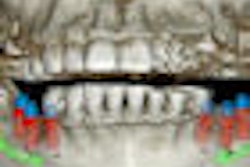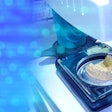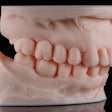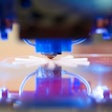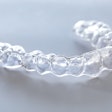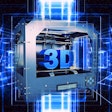Using an atomic-scale imaging tool on a sea creature's tooth, two Northwestern University researchers have peeled away some of the mystery of organic and inorganic interfaces in tooth and bone structure (Nature, January 12, 2011).
Using atom-probe tomography (APT), Derk Joester, PhD, a junior professor in materials and manufacturing at the McCormick School of Engineering and Applied Science, and co-author Lyle Gordon, a doctoral student in his lab, imaged teeth of the chiton, a tiny marine mollusk that lives in the sea and feeds on algae found on rocks.
The chiton continually makes new rows of teeth -- one a day -- to replace mature but worn teeth; in conveyor-belt fashion, the older teeth move down the creature's tongue-like radula toward the mouth where it feeds.
The APT technique applies an extremely high electric field to the sample; atoms on the surface ionize, fly off, and hit an imaging detector. The atoms are stripped off atom by atom and layer by layer, like peeling an onion. Computer methods then are used to calculate the original location of the atoms, producing a 3D map or tomogram of millions of atoms within the sample.
By using APT, Joester and Gordon were able to quantitatively map the chiton tooth and show that the carbon-based fibers, each 5 to 10 nanometers in diameter, also contained either sodium or magnesium ions.
Demonstrating that APT can be used to interrogate such materials opens up the possibility of tracking fluoride in teeth and also cancer and osteoporosis drugs in bone, the researchers noted. Detailed knowledge of organic/inorganic interfaces will also help scientists design new materials that combine the best properties of organic and inorganic materials.
"The tooth's toughness comes from a mix of organic and inorganic materials and the interfaces between them," Joester said in a press release. "While this is in principle well known, it is intriguing to think we may have overlooked how subtle changes in the chemical makeup of nanoscale interfaces may play a role in, for instance, bone formation or the diffusion of fluoride into tooth enamel. In this regard, atom-probe tomography has the potential to revolutionize our understanding."
Joester and Gordon now are studying the tooth enamel of a vertebrate and plan to apply APT to bone to learn more about its nanoscale structure.
Copyright © 2011 DrBicuspid.com




